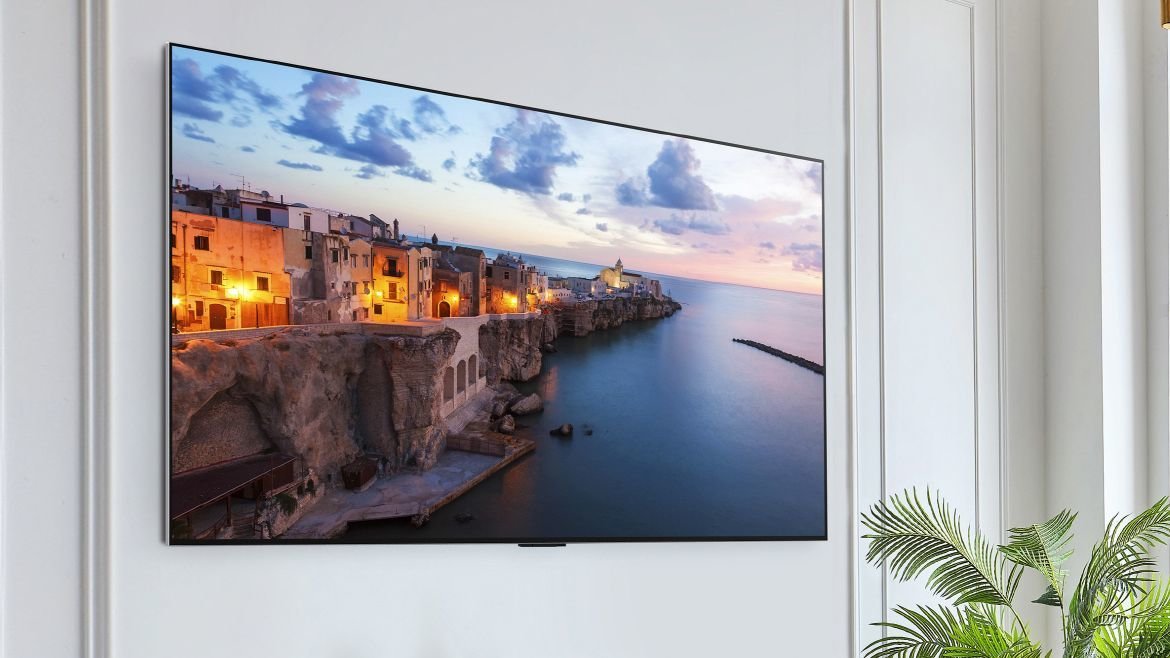Like all TV brands, LG electronics loves to make grand claims about the capabilities of its shiny new televisions, but for all of its bluster, it rarely details hard numbers regarding performance. So LG’s decision to state very specific numbers on the peak brightness of its new LG G3 OLED TV raised quite a few eyebrows.

According to the statement by David Seperson, Director Product Planning and Marketing at LG Electronics, the G3 will be the brightest OLED TV the company has ever sold, by some distance.
In a recent media briefing, Seperson announced that the LG G3 will be able to hit a peak brightness of approximately 2,040 nits when it’s set in HDR Vivid picture mode and measured using a 3% window - a pure white block that takes up 3% of the size of the entire screen, with the rest displaying pure black.
The Vivid picture mode is mainly designed to illustrate the extremes that a TV can deliver, but it’s generally not deemed to be especially realistic, as it dramatically alters the source material. So, Seperson also provided a separate peak brightness figure on the calibrated HDR Cinema mode, which is supposed to render the source content in a more authentic way, as close as possible to what the director intended people to see. In this mode, he said the G3 can hit a peak brightness of 1,470 nits.
While that’s far from the 2,040 nits maximum, it’s still way, way brighter than last year’s LG G2 TV, which maxed out at less than 1,000 nits in the same HDR Cinema mode.
The ability of the G3 to surpass 1,000 nits brightness is key, because that is more or less the level at which most modern HDR movies are mastered for home viewing. So any TV that can display images at over 1,000 nits should be able to reproduce the source material exactly as the director intended, without compromising its brightest scenes.
Micro Lens Array makes it happen
The improved brightness in the LG G3 OLED TV is due to the introduction of Micro Lens Array technology, which incorporates a layer of miniscule lenses that direct more of the light created by the OLED pixels towards the viewer. So, it gives LG a way to increase brightness without squeezing more out of its OLED panels.
LG Display, the subsidiary of LG that produces its OLED displays, has already confirmed that MLA is being used with its third-generation OLED panels, which it calls “META” OLED. However, until now, LG Electronics had not confirmed if the G3 specifically would be using that panel. Now, it has done so, joining Panasonic and Philips, who will also use META panels in their flagship OLED TVs (the Panasonic MZ2000 and Philips OLED908).
However, there’s a caveat, as not all G3 OLED TVs will come with the META panels. "The hardware that's in each size of the G3 differs, and in some sizes, MLA is part of that hardware solution,” Seperson explained.
Seperson didn’t officially state which sizes would get the META panel, but he didn’t really need to either. What he said is that the 55-, 65- and 77-inch G3 TVs will be “70% brighter” than last year’s model, while the 83-inch version will be “30% brighter”. So it doesn’t take a genius to realize that the three smaller sizes will get the META panel, and the 83-inch G3 will not. Indeed, it makes sense anyhow, because LG Display has only actually confirmed that the META panels are being made in three sizes - 55, 65 and 77 inches.
Anyone who’s in the market for a premium OLED TV this year has a lot of options to choose from. Besides the LG G3, they’ll also want to consider the aforementioned Panasonic and Philips OLED TVs. In addition, the META panel-based OLED TVs will likely be rivaled in their higher brightness by the second generation of QD-OLED TVs, including Samsung’s S95C and S90C, as well as Sony’s newly announced A95L QD-OLED TV. Those models have all been touted as being capable of hitting similar levels of brightness to what the META OLED panels can achieve.
The future of OLED is looking very bright.